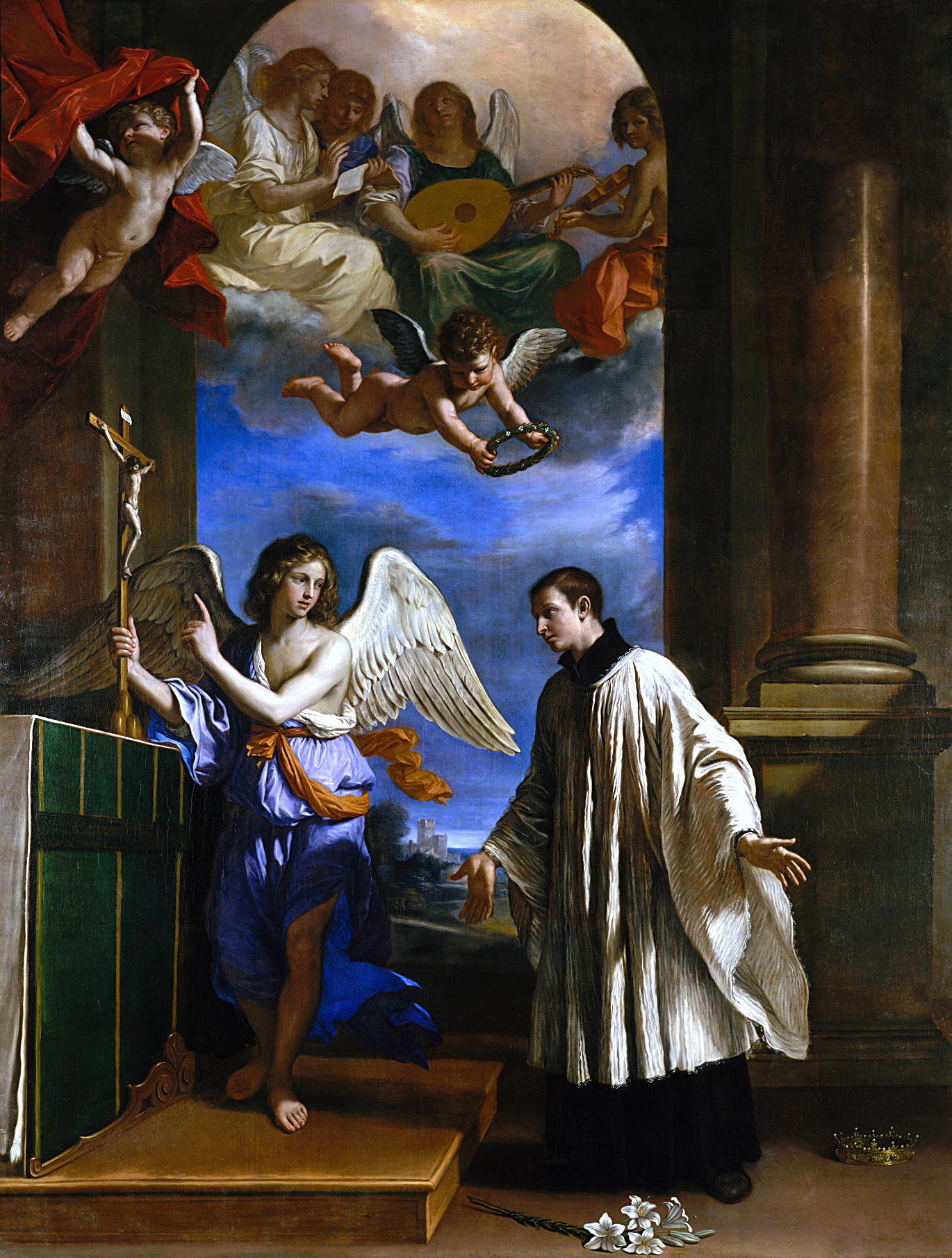Gonzaga's namesake saint inspires NCAA Tournament run during the pandemic
The Vocation of Saint Aloysius Gonzaga. Photo courtesy of The Metropolitan Museum of Art.
NEW YORK — A stroll through the European paintings gallery at the Metropolitan Museum of Art brings you face-to-face with dozens of masterpieces.
Among them is an altarpiece by the Italian Baroque artist Giovanni Francesco Barbieri, commonly known as Guercino.
The piece depicts the celebration of Luigi (also known as Aloysius) Gonzaga, who resigned his inherited title of marquis (he was a member of a prominent Renaissance-era family) to became a Jesuit in 1585 in order to care for the poor in Rome. He died in 1591 at the age of 23 as a result of the plague. Gonzaga was canonized a saint in 1726.
What does this painting and the man it depicts have to do with March Madness?
Turns out a lot.
Gonzaga (the saint) and Gonzaga (the basketball team) are two different things. Nonetheless, the patron saint of Christian youth (who then died in a pandemic) can help inspire a team to the ultimate prize. Indeed, it would be only fitting that Gonzaga win it all this year. And during a college basketball season when the tournament’s historical powerhouses such as North Carolina and Duke are not in contention, Gonzaga could very well capture its first national championship.
It’s no surprise that a Catholic university is among the heavy favorites this season to win the ultimate prize in men’s hoops. After all, Catholic centers of higher education are no strangers to winning the NCAA Tournament. Villanova did it as recently as 2018.
Leading the pack is undefeated Gonzaga, runners up in 2017, who are undefeated so far this season. The school, once considered an underdog capable of defeating high-ranked teams, has reached the tournament every season since 1999. They have advanced to the Sweet 16 on six consecutive occasions.
Gonzaga, located in Spokane, Wash., is named after the Italian saint who died from an epidemic not much different from the one gripping the planet at the moment.
“Gonzaga, the university, honors Gonzaga, the saint, with a statue at a parish church adjacent to the campus. Aloysius Gonzaga is depicted carrying a man diminished by disease, head resting on the saint’s shoulder,” wrote Erik Brady, a sports reporter for USA Today. “The sculpture commemorates Gonzaga’s time in plague-swept Rome in the late 16th century, when he would seek sufferers in the streets, carry them to hospitals, wash their wounds and nourish their souls.”
Gonzaga, which are ranked No. 1, is poised to win the title after reaching the Final Four on Tuesday night following a 85-66 blowout of No. 6 USC.
For now, Gonzaga is on a collision course to meet Baylor, a private Baptist research university in Texas, in the championship game. Religion storylines are no surprise this time of year when it comes to basketball (Oral Roberts’ Sweet 16 run earlier in the tournament sparked some controversy) and schools like Gonzaga make sure there’s plenty for sportswriters to ponder as they file their stories from various Indiana venues, where the tournament is being held this season because of the virus.
But Gonzaga’s name has also resulted in some botching the way to pronounce the school’s name.
“It seems to come up every year during NCAA Tournament time,” Pete Tormey, the school’s associate director of public relations, told NBC. “To be honest, it’s really kind of a regional pronunciation. Things are pronounced differently and we understand that, so it’s kind of a tongue-in-cheek situation.”
It’s not “Gone-zaw-ga” or even “Gone-jog-ga.” So, how is the name of the Jesuit school pronounced? The guide posted on its website says “Gone – ZAG (as in “bag”) – uh.”
All this confusion comes for a program that’s relatively new at basketball success. The private liberal arts school made the NCAA Tournament for the first time in 1995. They reached the Final Four for the first time in 2017 after years of being considered a Cinderella team dating back to the late ‘90s for their ability to knock off top-ranked opponents.
Gonzaga guard Andrew Nembhard, following Sunday’s 83-65 rout of No. 5-seed Creighton in the West Region semifinals, said the team isn’t done with winning at the 68-team tournament.
“I don't think we have peaked,” he told reporters. “I think, as I said earlier, we can always get better. We can always work on our stuff.”
The team — also known as the Bulldogs or “Zags” if you really can’t pronounce the name — is coached by Mark Few, who took over in 1999. A member of the coaching staff since 1989, he has overseen the program catapult from obscurity into a national power.
The 58-year-old Few, the son of a Presbyterian minister, and Gonzaga have been perfect for each other. The team has yet to win an NCAA title and missed out last year after the tournament was canceled because of COVID-19.
“We just want to win this tournament,” Few said. “That’s all we want to do is just win this tournament. Obviously, if we win the tournament we end up undefeated, but I've never heard any of the guys talk about it. The staff doesn't talk about it. I don’t talk about it. Gosh, man, we just want to win this thing.”
Clemente Lisi is a senior editor and regular contributor to Religion Unplugged. He is the former deputy head of news at the New York Daily News and teaches journalism at The King’s College in New York City. Follow him on Twitter @ClementeLisi.

